Janmashtami: Prominent places where Krishna’s birth is celebrated
On Janmashtami, Sahapedia traces the principal cities associated with the celebrations of Lord Krishna’s birth across India.
Written by Navina Lamba | New Delhi | Updated: September 3, 2018 4:19:18 pm
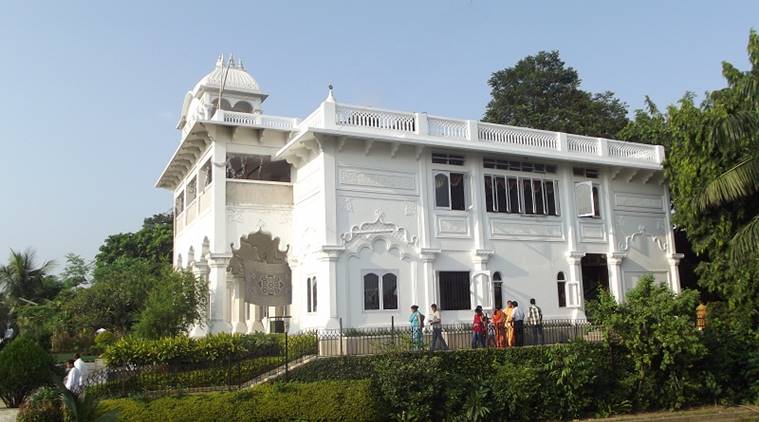
Here are a few places in India where Janmashtami is celebrated with great vigour and enthusiasm, in often similar ways but also with regional peculiarities. (Source: Wikimedia Commons)
Janmashtami, the festival that commemorates the birth of Lord Krishna is celebrated with great pomp and show not only across India, but by devotees around the world as well. While some rituals and practices are the same everywhere, there are a few places that have their unique, regional touch. These are also places that are associated with the legend and life of Krishna, or to the larger Hindu faith. These are places that bring together people, irrespective of their religious faith, and collectives like International Society for Krishna Consciousness (ISKCON) make Janmashtami all-inclusive.
Here are a few places in India where Janmashtami is celebrated with great vigour and enthusiasm, in often similar ways but also with regional peculiarities.
MATHURA, UTTAR PRADESH
Mathura is one of the seven cities (sapta puri) considered holy by many Hindus and is said to be the birthplace of Lord Krishna. This ancient city, situated on the banks of the Yamuna river, comes alive on Janmashtami, with the people of Mathura putting up a spectacle (known as jhankis), depicting the story of Krishna’s birth.
The celebrations, which go on for two days, include fasting during the day, feasting at night, and jhankis or tableaus of mud and ras leela performances (dance-drama) narrate the life of Krishna. The ras leela is mostly performed by children in the Mathura temples.
While Mathura is home to many temples important to the Vaishnava faith, the Krishna Janmabhoomi Mandir is the most interesting and important – it has a prison cell, called the garbha-griha, which is believed to be the birthplace of Krishna.
The festival in Mathura has two distinct features, the first being the jhulan utsav, or the festival of swings. In this, people put out decorated swings in their yards as a way to welcome Krishna into their homes. Ghatas, the other element of Janmashtami is the decoration of temples throughout the city.
VRINDAVAN, UTTAR PRADESH
Also situated on the banks of River Yamuna, Vrindavan is a temple town with hundreds of temples, most popular amongst them being the Ranganathji, ISKCON, Govind Deo, Radharam and Banke Bihari temples. These are the main temples where people flock to for ceremonies and rituals related to Janmashtami.
This holy land near Mathura is associated with Krishna’s childhood and teenage, and his famous ras leelas. During Janmashtami, celebrations of which begin almost 10 days in advance, Krishna’s life is recreated through ras leelas and jhankis. However, in Vrindavan, these performances are undertaken, not by children, but by professional artistes.
The Janmashtami celebrations in Vrindavan are known for the abhishek, or the grand ritualistic bath of Krishna, before the ceremonies begin.
DWARKA, GUJARAT
Dwarka, meaning ‘door to moksha’, is one of the char dhams of India. Situated on the coast of Kutch in Gujarat, it is believed to be where Krishna lived his adult life and the kingdom that got submerged in the ocean after Krishna’s death.
Also called the Golden City, it has a number of important temples and sites such as the Dwarkadhish temple, the Rukmani temple and the Bet Dwarka, allegedly, the site where Krishna died.
The Dwarkadhish temple is known for its Janmashtami celebrations, which begin with the mangla aarti, followed by the utsav bhog offered an hour before midnight. At 12 midnight, devotees welcome the Lord by chanting his name and singing hymns. This is also the time when they break their fast and offer the maha bhog to Krishna. These nightlong celebrations, outlined with bhajans and ras leelas, end at around 2am.
GOKUL, UTTAR PRADESH
Gokul, near Vrindavan, is the place associated with Krishna’s childhood, the forests of which was where he took his herd of cows to graze. Interestingly, Janmashtami here is celebrated a day after the actual day of the festival, since, according to legend, Krishna was brought here the day after he was born, after midnight. Even the way it is celebrated is different – at midnight, the people of Gokul shower the icon of Krishna with holy water of the river Ganga, curd, milk and nectar. They also play with and drench each other in buttermilk and turmeric.
Some of the major religious centres that see the most footfall during this time are the Radha Raman and Radha Damodar temples.
MUMBAI and PUNE, MAHARASHTRA
As the legend goes, Krishna, as a child, was greatly fond of ghee and buttermilk, and, hence, is fondly called makhanchor by his devotees. In remembrance of that and as a way to recreate Krishna’s childhood, Janmashtami, in Maharashtra, is celebrated as Dahi Handi. Devotees, on the second day of Janmashtami, form a human pyramid and compete with others to break the earthen pot (handi) that is filled with buttermilk and dry fruits, and is hung at a great height. Dahi Handi celebrations can be experienced in many places in Maharashtra, especially in Mumbai.
The other centre of Janmashtami celebrations is Pune. The ISKCON temple here becomes a lively site of people fasting, praying and singing hymns together. Devotees take part in the bhajan, akhanda kirtan and the maha-abhishek at midnight, like in the temples of Mathura and Varanasi.
PURI, ODISHA
The land of the Jagannath Temple, Puri is said to be the abode of Krishna, where he resides with his siblings, Balarama and Subhadra. Here, the Janmashtami celebrations start 17 days prior to Janmashtami. Actors and artistes enact episodes from Krishna’s life, such as the tale of Bakasura badha and the legend of Kalia dahan. The episode of Kamsa Vadha, wherein he kills his uncle Kamsa ends this series of days of folk theatre, on the day of Janmashtami.
UDUPI, KARNATAKA
One of the major South Indian pilgrimage sites, Udupi is famous for its Shri Krishna Math – a huge temple surrounded by eight monasteries. This temple is known for its Krishna idol, which is richly adorned with jewels, seated on a splendid golden rath (chariot). It is also known for the kanakanna kindi – a small window through which, it is believed, Krishna gave darshan to his devotee, Kanakadasa.
Being an important religious site and one concerned with the life of Krishna, Udupi sees great celebration of the festival, known here as Gokulashtami. The town celebrates this festival by performing arghya pradana at midnight – the ritual pouring of milk or water on the idol of Krishna. Along with that, devotees make laddus and chakkulis, to be offered to Krishna.
Here also, plays on the God’s childhood (ras leelas) are staged on the streets, with the performers displaying clay idols, dancing, folk singing and playing the flute to invoke and pay homage to their lord.
GURUVAYUR, KERALA
Guruvayur is a municipal town in the Thrissur district of Kerala and is home to one of the most popular pilgrimage sites in the state – the Sri Krishna Temple. It is said to be the fourth largest temple in India, in terms of the number of devotees that visit every day. Naturally, Janmashtami, or Ashtami Rohini celebrations here have an immense and splendid character.
The idol of Krishna in the temple is decorated for darshan. Devotees observe a fast on the day before the festival, singing hymns and chanting shlokas at the temple. They also hold special concerts, cultural programmes and satsangs throughout the night – as Janmashtami is celebrated till the early hours of the next day.
ISKCON temples in ASSAM and MANIPUR
Both Assam and Manipur have beautiful ISKCON temples where Janmashtami celebrations begin a day early.
In Assam, the Radha-Krishna ISKCON Sanctuary and the Shilanyas ISKCON temple in Guwahati are the centres of Janmashtami celebration as devotees flock in hundreds to these places. The latter ISKCON temple celebrates Janmashtami with a special arti, the singing of bhajans, and chanting of the Bhagavad Gita, wherein everyone irrespective of their religion can be present.
Similarly, Manipur (especially in its capital city, Imphal) has a few prominent temples where believers get together and do puja and cook food to give aid to the poor. It is places like the Mahabali temple, the Shri Shri Govindaji temple and the ISKCON temple where the temple-priests narrate stories from Krishna’s childhood.
Navina Lamba is associated with www.sahapedia.org, an open online resource on the arts, cultures and heritage of India. Read more about the Ras Traditions of Gujarat here.
For all the latest Lifestyle News, download Indian Express App
© IE Online Media Services Pvt Ltd






















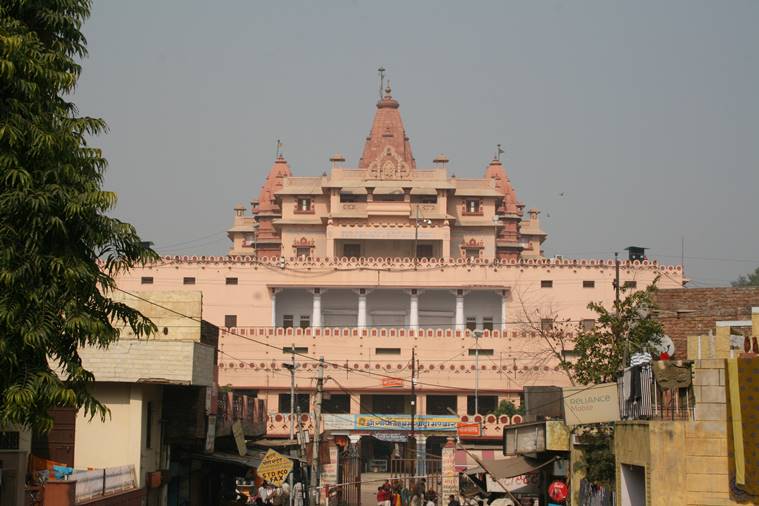 Krishna Temple, Mathura. (Source: Wikimedia Commons)
Krishna Temple, Mathura. (Source: Wikimedia Commons)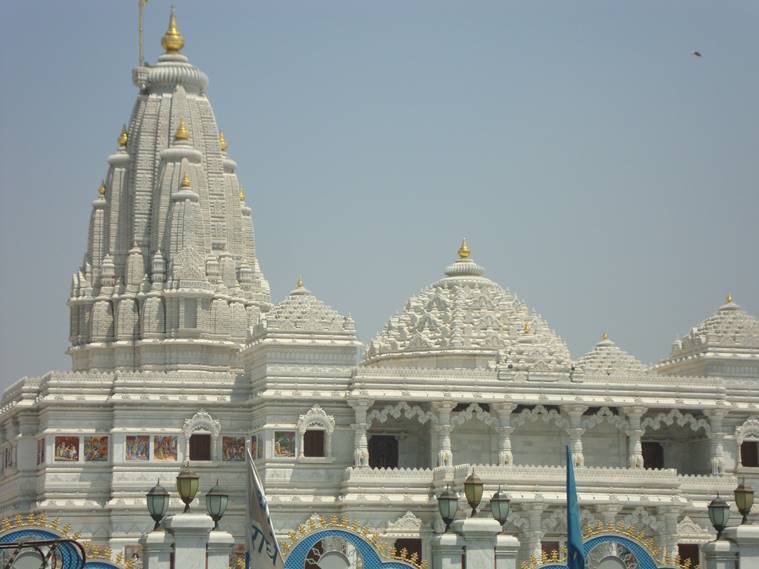 ISCKON Temple, Vrindavan. (Source: Wikimedia Commons)
ISCKON Temple, Vrindavan. (Source: Wikimedia Commons)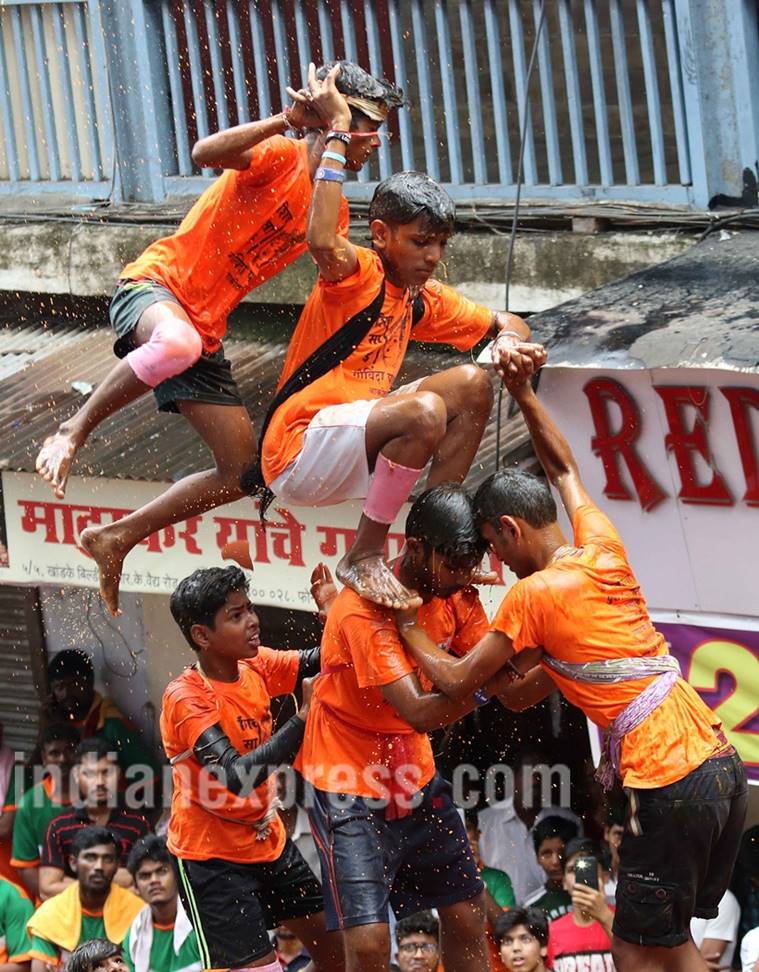 Dahi Handi, Maharashtra. (Express Photo by Prashant Nadkar)
Dahi Handi, Maharashtra. (Express Photo by Prashant Nadkar)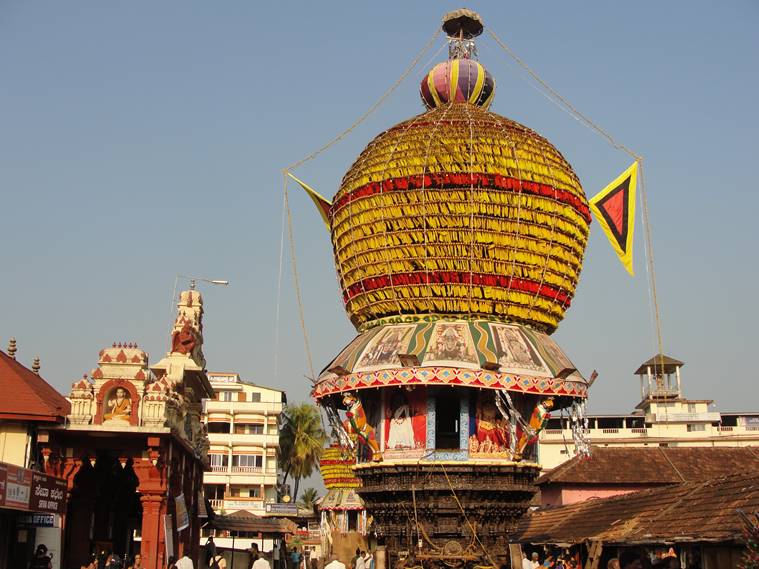 Sr Kirishna Math Udupi, Karnataka. (Source: Wikimedia Commons)
Sr Kirishna Math Udupi, Karnataka. (Source: Wikimedia Commons)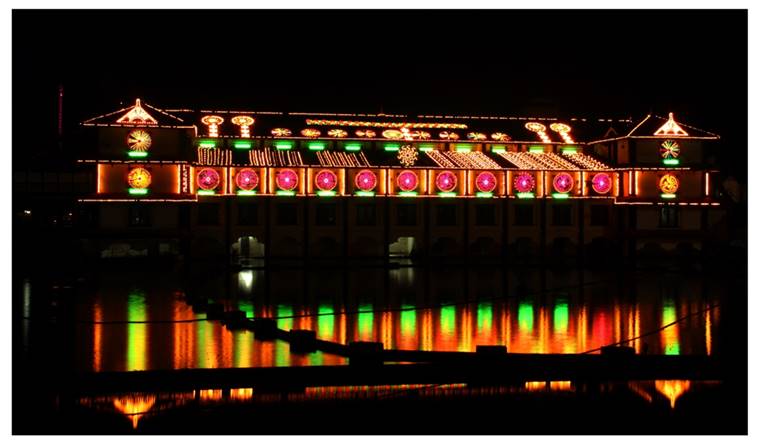 Sri Krishna Temple, Guruvayur, Kerala. (Source: Wikimedia Commons)
Sri Krishna Temple, Guruvayur, Kerala. (Source: Wikimedia Commons)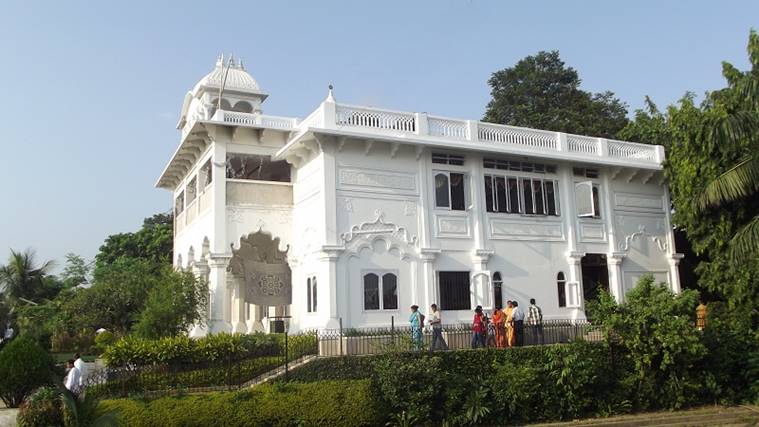 ISCKON Temple, Guwahati, Assam. (Source: Wikimedia Commons)
ISCKON Temple, Guwahati, Assam. (Source: Wikimedia Commons)
No hay comentarios:
Publicar un comentario